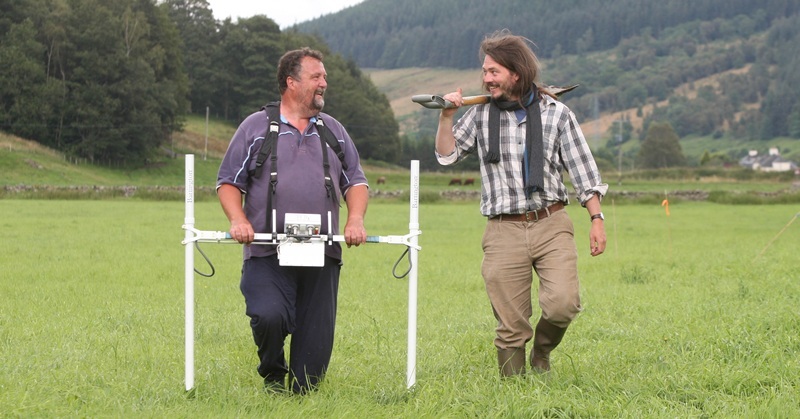Archaeologists are hoping to uncover the secrets of one of Scotland’s earliest places of Christian worship.
Excavations have begun at Fortingall village in Highland Perthshire, where the remains of an ancient Pictish monastery are believed to rest.
The dig will be led by renowned archaeologist Dr Oliver O’Grady, best known for excavations at Scone Palace that revealed medieval burials and evidence of the lost abbey of Scone.
Dr O’Grady carried out extensive geophysical surveys of the site last year and found signs of the monastic building, one section of which appears to enclose the cairn known as Carn na Marbh or Cairn of the Dead.
He has joined forces with members of the Breadalbane Heritage Society to discover more about Fortingall’s history and in particular its place as a centre of Pictish worship.
The project will begin with the excavation of two trenches in the fields surrounding Fortingall village, where the monastery is thought to have stood.
Targets for the archaeological detectives include a large ditch-like feature believed to have surrounded the ancient parish kirk and Fortingall Yew tree, which seem to have sat at the heart of the site.
The monastery is thought to be very important for the region’s history because it is at such sites that Christianity and literacy came to the area during the conversion of the Picts, the Celtic peoples of northern Scotland, from the 7th century AD.
The disciples of St Columba of Iona, such as St Adamnan and St Coeti, are still remembered in tradition and place names and may have actually founded the churches at Fortingall and nearby Dull.
Dr O’Grady said: “This is a great opportunity to learn more about a site likely to have been closely tied up in the beginnings of written records in the Highlands and religious belief in Scotland.
“We’ve been overwhelmed by the positive response from the local community, many of whom will be helping us out and hopefully discovering some fascinating finds.”
The community of Fortingall may be tiny but local legend suggests it may in fact have been the birthplace of a notorious historical figure.
The Fortingall Yew is estimated to be up to 5000 years old, making it Europe’s oldest living thing.
Pontius Pilate, later to become the Roman procurator of Judea, is thought to have spent his early years beneath its shady canopy in what was then a remote Roman outpost.
The area’s earlier inhabitants were the Picts, who left their mark on the countryside in the form of carvings on stones and it is their history the project aims to uncover.
The archaeologists and local volunteers will dig at Fortingall until Wednesday, August 31, and will be on hand to answer visitor questions.
Open days will also be taking place on Saturday, traditionally the date when St Coeti’s Fair was held at Fortingall, and on August 27, when there will be the opportunity to see findings from the dig and learn more about the archaeologists’ work and how to get involved.
Limited parking will be available beside the kirk and Fortingall Hotel for visitors, who should follow signs to the dig from the kirk car park.
The project is supported by a grant from the Society of Antiquaries of Scotland and through access given by the Glen Lyon Estate.
